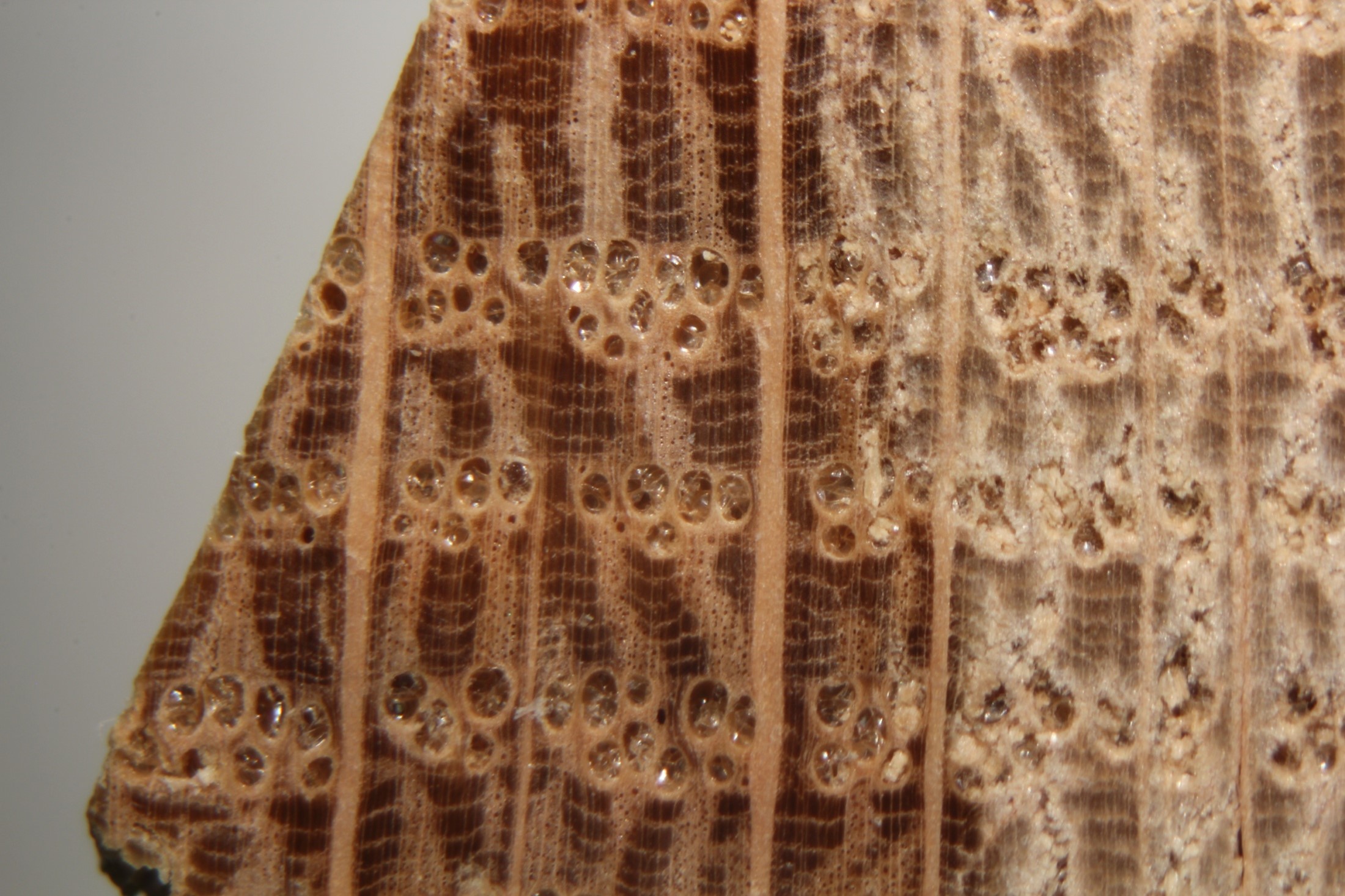Wood ID
1/20
There's no tags or description
Looks like no tags are added yet.
Name | Mastery | Learn | Test | Matching | Spaced |
|---|
No study sessions yet.
21 Terms
Acer saccharum
Sugar maple
Juglans nigra
Black walnut
Prunus serotina
Black cherry
Pinus spp.
Southern yellow pine
Liriodendron tulipifera
Yellow-poplar
Quercus rubera
Red oak
Quercus alba
White oak
Sugar maple (Acer saccharum)
•Diffuse porous hardwood
•Light color, nearly white
•Pores solitary or in radial multiples—very small diameter
•Rays: two sizes: a) very small and b) as wide as widest pore
Sugar maple (Acer saccharum)
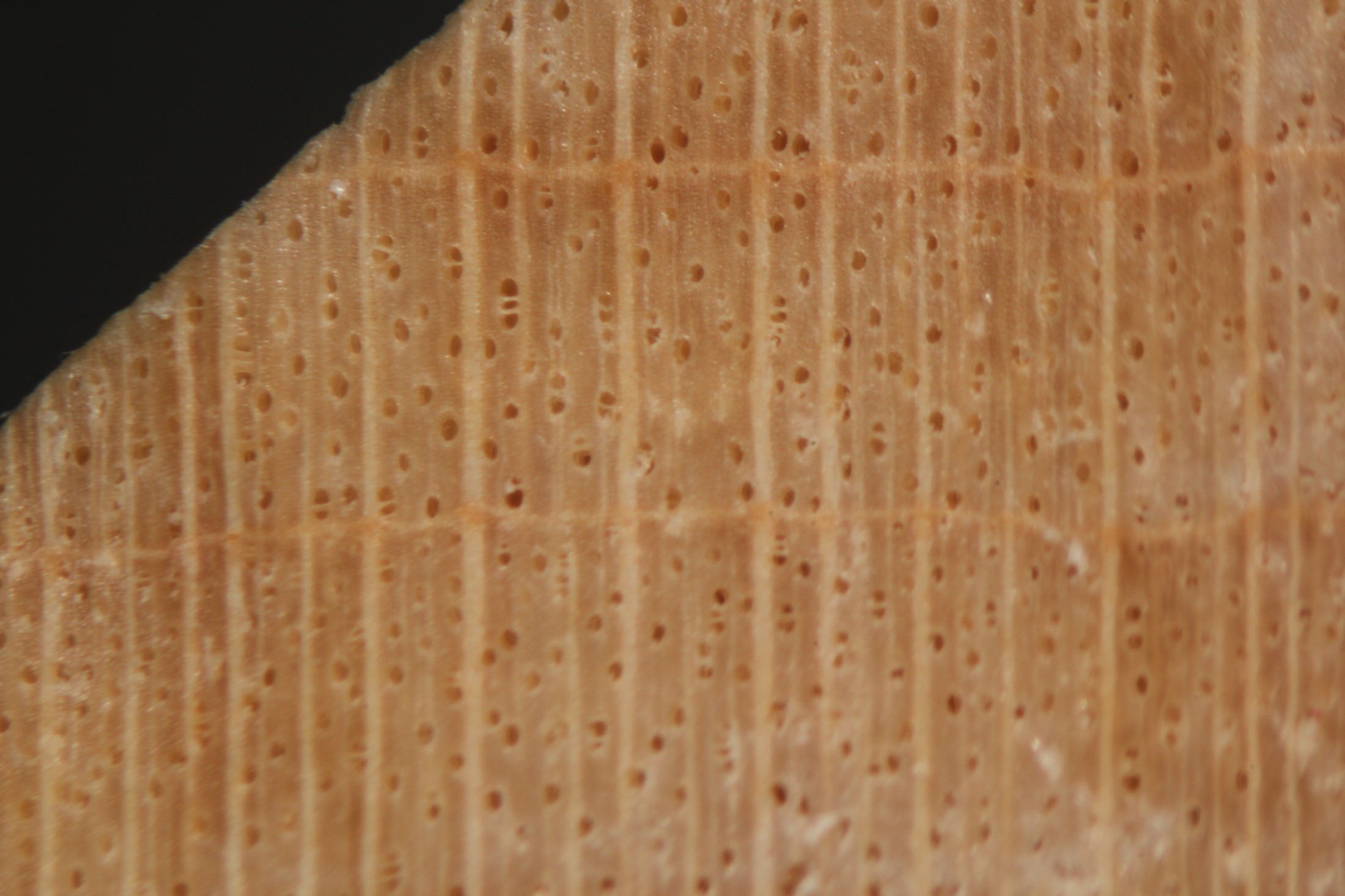
Black Walnut (Juglans nigra)
•Semi-ring porous
•Dark brown heartwood
•Pores solitary or in radial multiples
•Tyloses present but variable
•Rays: indistinct to naked eye. Visible as fine lines
Black walnut (Juglans nigra)
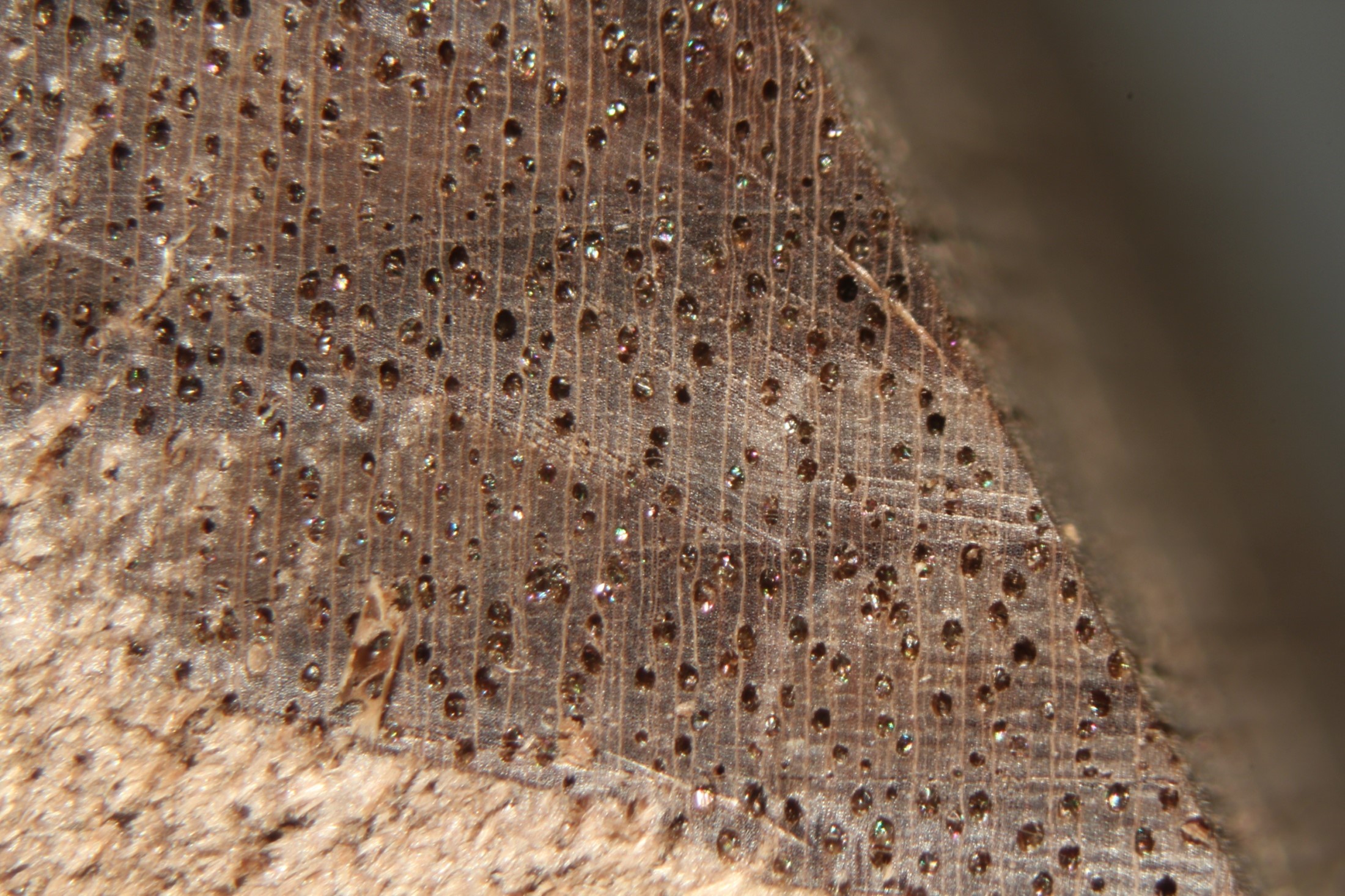
Black cherry (Prunus serotina)
•Diffuse porous
•Heartwood light brown to dark reddish brown
•Pores: Uniformly distributed, small, distinct solitary and in multiples and small clusters
•Row of pores in earlywood delineates growth ring
•Rays: Distinct, light lines against darker cells
Black cherry (Prunus serotina)
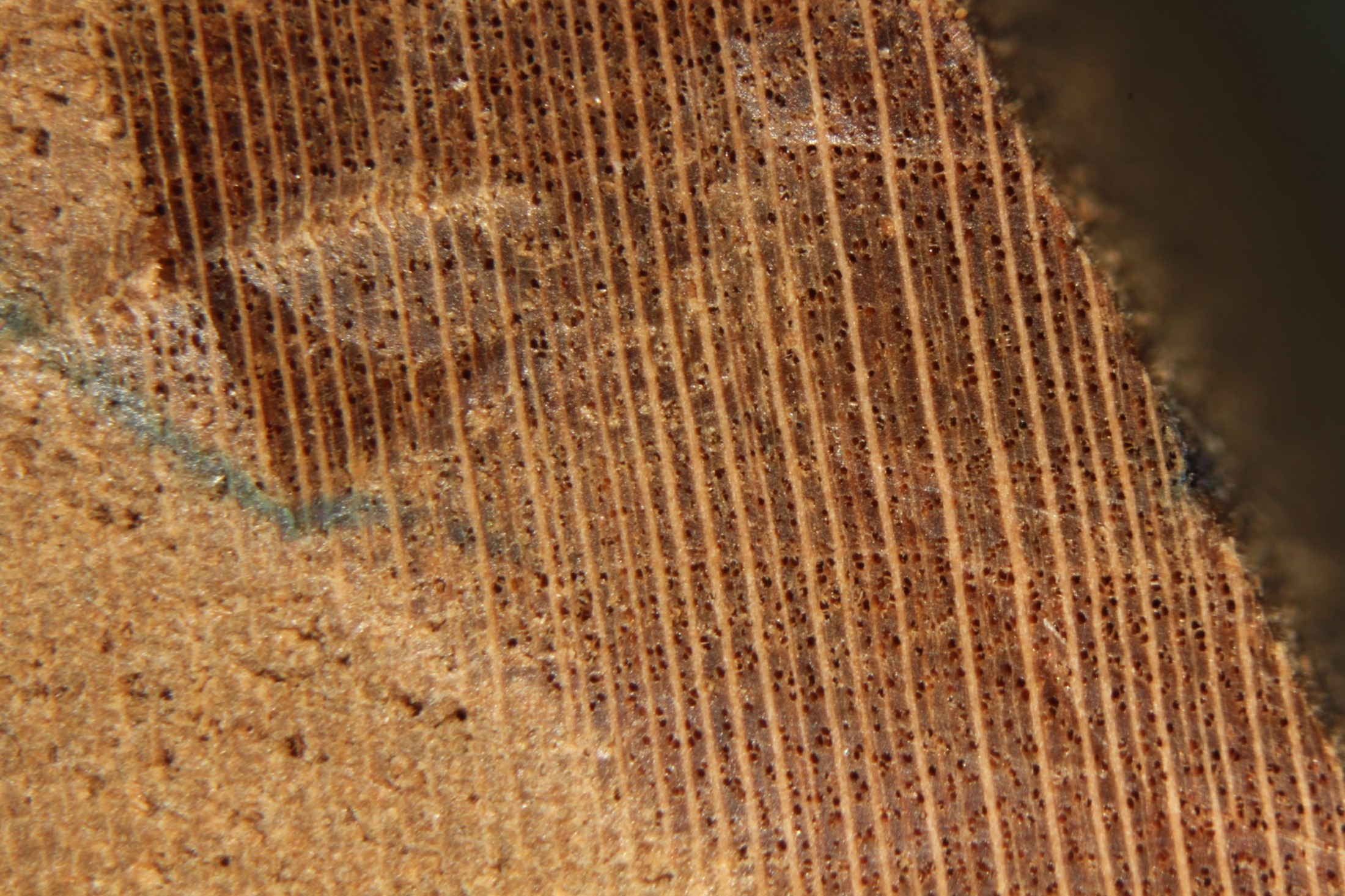
Southern yellow pine (Pinus spp.)
•Resinous softwood
•Uneven grain—annual rings very distinct
•Abrupt transition from earlywood to latewood
•Resin canals numerous, visible to naked eye
•Rays: two widths
Southern yellow pine (Pinus spp.)
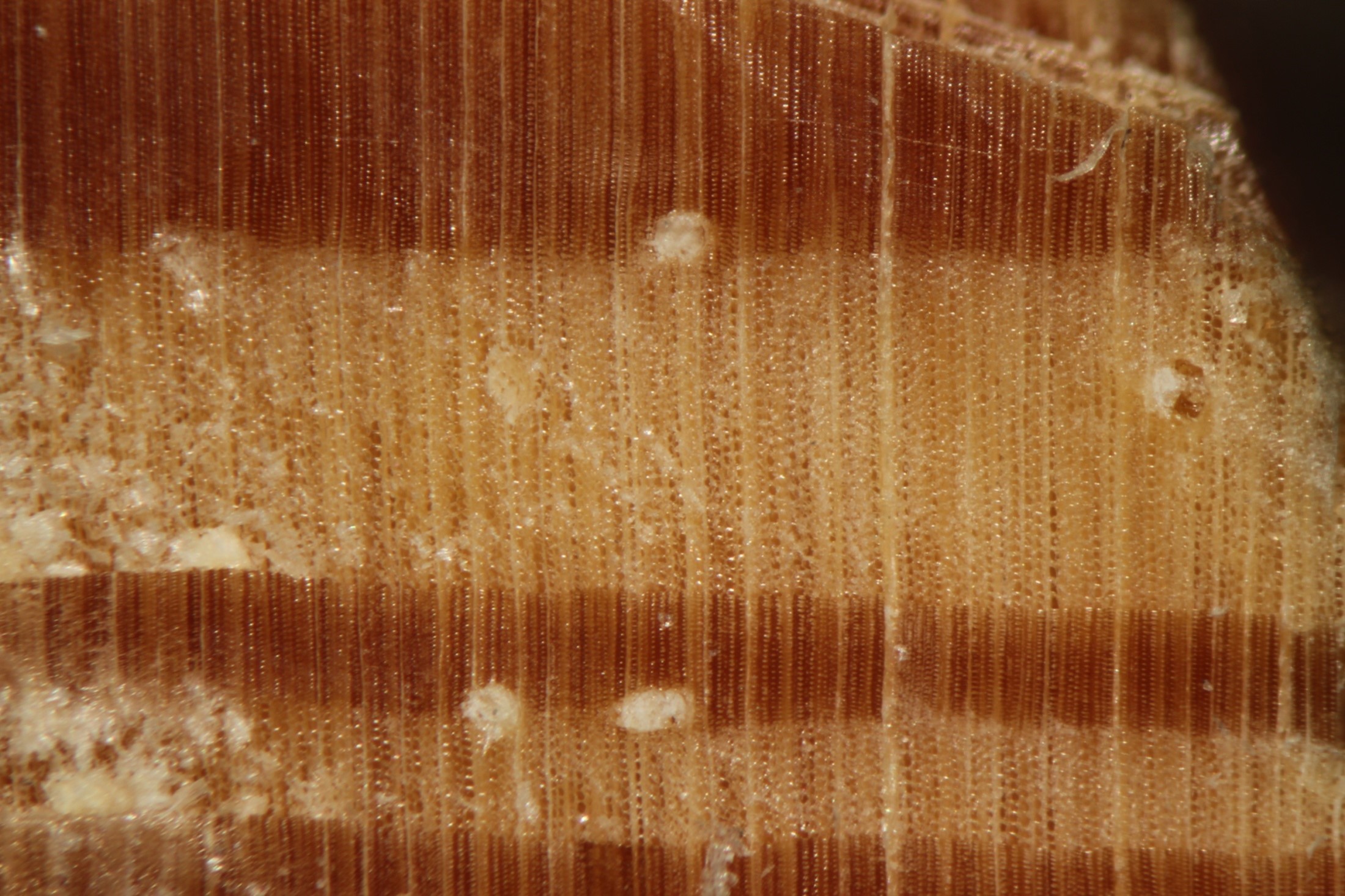
Yellow-poplar (Liriodendron tulipifera)
•Diffuse porous
•Heartwood , greenish brown, purple, blue, black, yellow, and streaks of color.
•Pores: Solitary or multiples
•Growth ring distinct due to white color terminal parenchyma cells
•Rays: small, often swollen (noded) at ring boundary
Yellow-poplar (Liriodendron tulipifera)
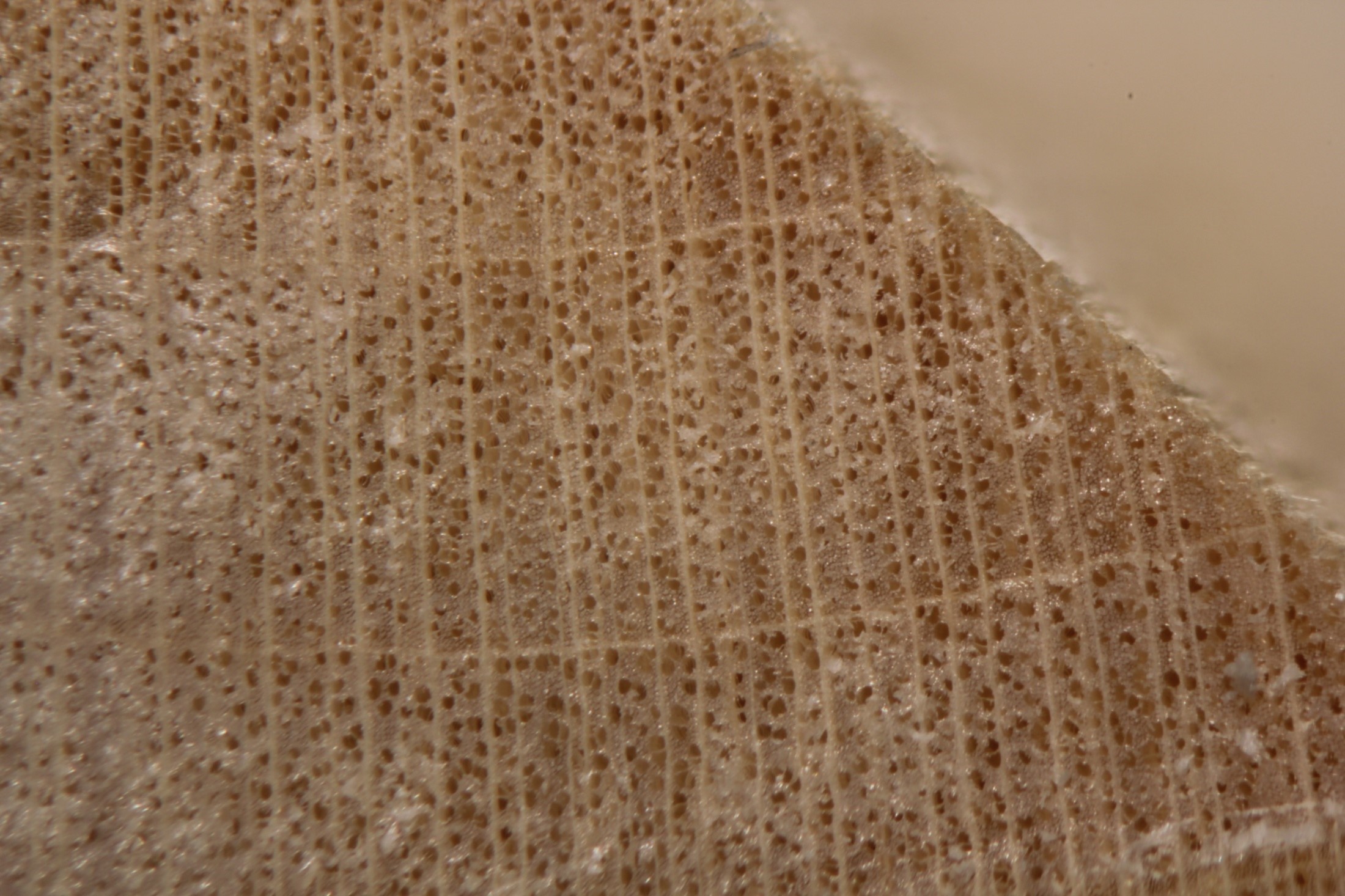
Red oak (Quercus rubera)
•Ring porous
•Earlywood pores up to four in width, abrupt transition to latewood
•Usually lacks tyloses
•Latewood pores distinct, countable, arranged in single radial rows
•Rays: Very large, easy to see with naked eye,3/8” to ¾” high on tangential face
Red oak (Quercus rubera)

White oak (Quercus alba)
•Ring porous
•Earlywood up to three pores wide
•Latewood pores small, too numerous to count, radial rows
•Tyloses usually abundant
•Rays commonly greater than one inch in height on tangential surface (can be several inches high)
White oak (Quercus alba)
